Thank you! Your submission has been received!
Oops! Something went wrong while submitting the form. Please try again.
In the middle of June, I went on my journey to Kimberley to join my supervisor JB and colleague Walker. This blogpost details my thoughts and experiences of the visit.
Arriving in Kimberley by plane, it is as if the runway is in the middle of nowhere. There were tiny creatures on the tarmac. Later, it turned out they were meerkats on patrol. On the night of my arrival, there was a partial blackout, leaving the streets completely dark. As the historian Cobus Rademeyer pointed out, that was quite ironic for a place that proudly installed the first electric streetlighting in the southern hemisphere back in 1882. The first week we attended the HASA (Historical Association of South Africa) Conference at Sol Plaatje University. On the first day, JB did the keynote speech on the historiography of the diamond mining town that is Kimberley. Throughout the speech, JB discussed the to us familiar topics of Cecil John Rhodes and the connections to the industrial revolution of Southern Africa, which has been written on during previous blogposts. Besides, JB also spoke about the Malay Camp, the community cleared in 1959 to make space for what would become the Oppenheimer Gardens. Kimberley is a declining city of former glory that is described as hot, dusty and a bit boring. Of course, the city’s greatest tourist attraction is a space where something used to be, and someone joked that the potholes compete with the Groot Gat (the Big Hole). Nevertheless, Kimberley is also incredibly friendly and wherever we went, people made me feel welcome and I had the chance to mingle with the Afrikaner community. Therefore, I share the sentiment of the song that JB played during his speech ‘
The second week we also held our field school in Rooifontein, a game farm close to the city. During this field school, we explored a methodology we refer to as ‘walking the land’. In practice, this involves observing the landscape very closely, noting down everything of significance, and interpreting these observations to finally construct a historical narrative.
At my home, in Amsterdam, I walk and cycle everywhere. In Kimberley, you go from gated place to gated place. That can be a house, a university building and even the coffee place which I frequented in Kimberley was gated. It was no different in Rooifontein. While I knew this, it was different to feel it. The idea of Africa may be a continent of big spaces, with sizes that are unimaginable to the Dutch mind, but even these big spaces are gated and guarded. For example, when we went to see the Magersfontein Battlefield, a topic on which Luke Blomsa has written, we briefly stopped at a race horse farm called Mauritzfontein, established by the Oppenheimer family in the 1940s. We stopped to watch some black impala, and immediately a security car drove by to see what suspicious activity we were up to. In Rooifontein, JB had to make a reservation for us to enter and to stay in what used to be a hunting lodge outfitted with gun cabinets. When we arrived, Walker and I waited in the car while he sorted out the paperwork. As the managers opened the gate, we drove into a space that was beautiful and big but felt nevertheless contained and bound.
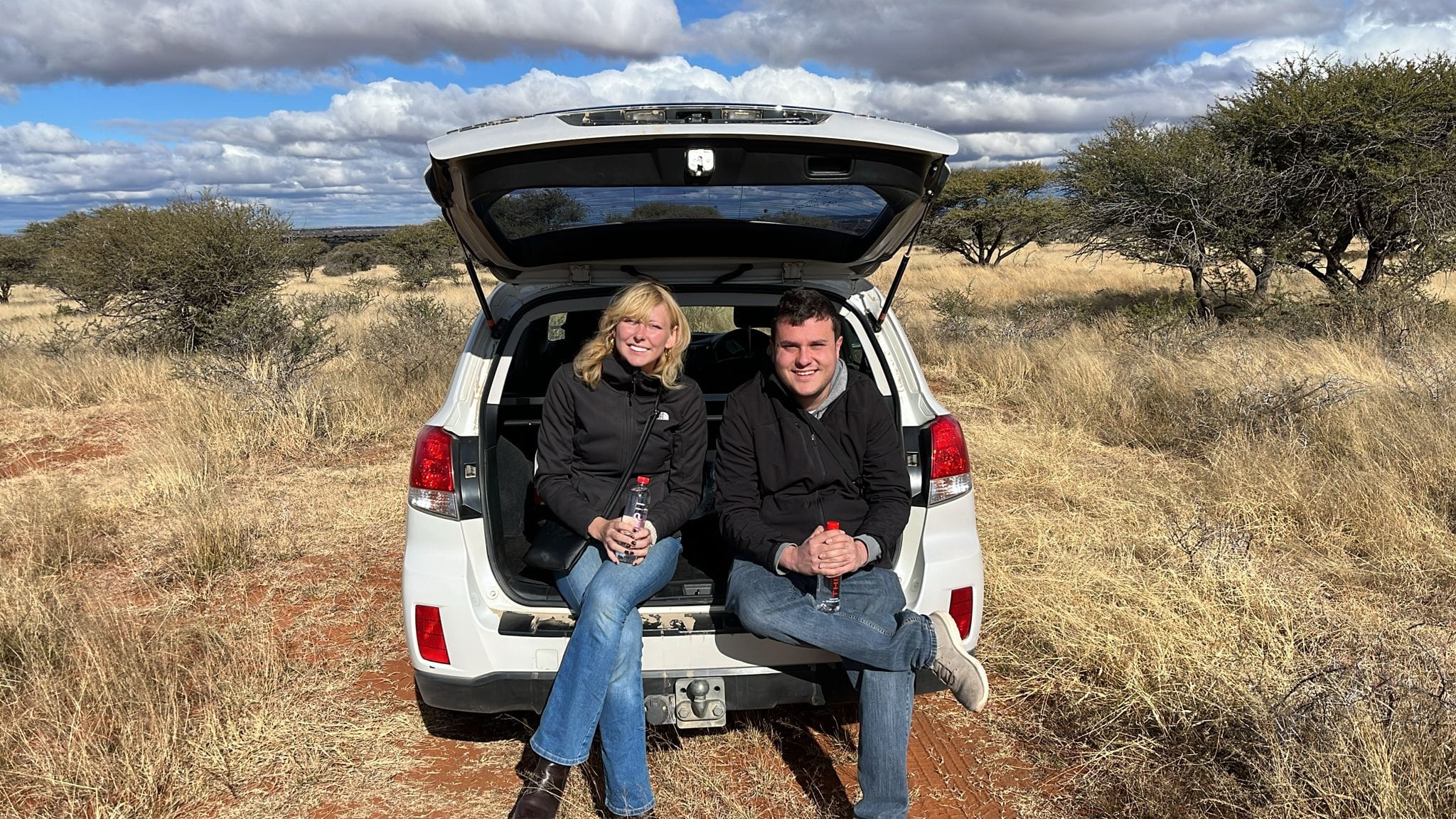
I wonder if the animals know this. I think they do. In the middle of June, it is peak hunting season and the hunters had to temporarily cease their activities. There was a noticeable difference in the antelopes that were being shot and those that were preserved. We saw sable antelopes, imported from Zambia, that knew very well they were more worth living than dead and springbok, who knew that their lives were easily replaceable to the hunter’s mind. As a consequence, the sable antelopes stared back at us with cocky confidence, whereas the springbok ran as fast as they could when the threatening sound of a car. A bound space in which their lives are constantly in danger made their nervous system permanently in a state of dysregulation.
The principle of our methodology of ‘walking the land’ is simple, if you look attentively enough, there is always a story to find. There were things we knew a priori. For example, Rooifontein was used as a diamond floor tied with the extractive industry that made Kimberley once an economic centre of the world. Moreover, JB provided us with his vast knowledge on the geology and ecology to interpret the rocks and plants we would encounter. I remembered simple things, like how Kalahari soil is always rust-coloured because of the presence of iron oxide and how the presence of a patina on a rock can tell you whether it has been turned over or not. Nevertheless, the more time you spend in a landscape, the better you will learn how to read it. And while it may seem like a stretch to try to make sense of everything (from rocks to plants to non-human animals to humans), it is precisely the task of an environmental historian to shed a light on these many many many interconnections.[1]
We split up to walk in different directions and later report back on our findings. Walker needed more time for his walk, and soon we discovered why. He brought us to a place where big rocks laid scattered all around with etchings of animals such as eland, a rhinoceros and human beings. JB told us that these drawings could be as much as 12.000 years old and he saw what we did not see: the main drawings were carved on three big rocks that together formed the shape of a scarab beetle. As we marveled at the drawings, we saw the marks of other visitors who were not quite the artists. It turned out that during the Angro-Boer war, soldiers had decided that this ancient place was the perfect place to immortalise their names in clumsy letters, the most noticeable example being ‘William P. Miller’ with the date 1898. In anger, and to great amusement of my colleagues, I exclaimed ‘Fok jou Miller!’ and I still stand by those words.
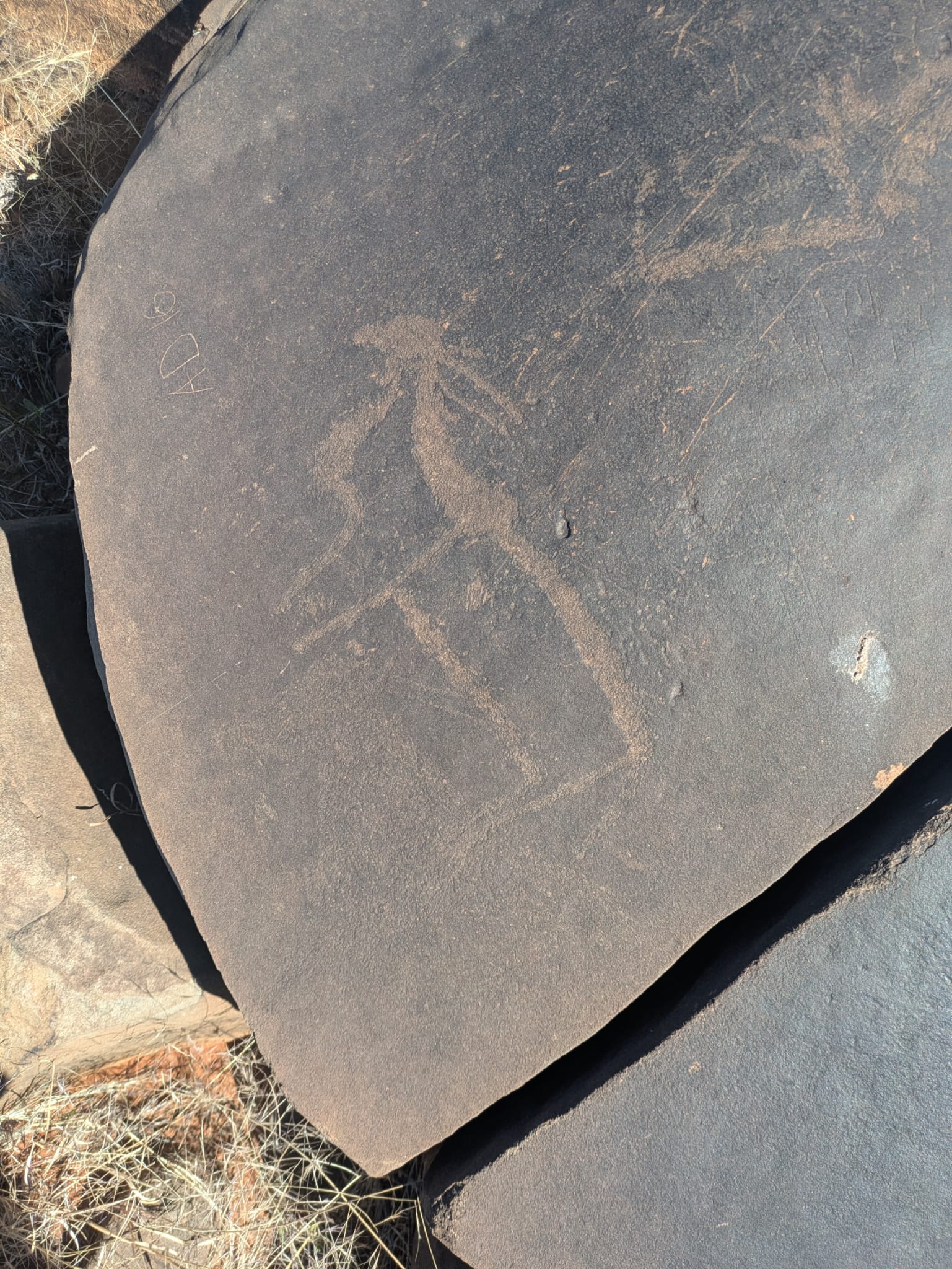
After our busy time in Kimberley, we took the plane to Zambia. We arrived in Lusaka and visited EastPark Mall near the University of Zambia. It featured all the South African shops and restaurants we knew about: Shoprite, Woolsworth, Pick n Pay, Mugg & Bean and of course Panarotti’s. Being from Joburg, Walker felt right at home, and both he and JB remarked that the presence of these establishments seemed to confirm their ideas on South African expansionism. Lusaka is the fastest-growing city in the Southern African Development Community, and JB kept pointing out how many buildings hadn’t been there the last time he visited in October 2024. Outside of the mall, people were selling all kinds of things (we bought some bananas while at a traffic light), hustling in informal markets to make a living. Though I wish I could have stayed longer to understand it better, the city left me with a sense of energy and the widely-shared sentiment that it is actually possible to make it. Back at home, in Amsterdam, I feel that there is a sense of disillusionment with the world at large and politics. While there may be some private optimism, it is nowhere near the collective optimism that I felt in Zambia.
To continue our journey, we took the Great North Road up to Kabwe. Whereas in previous years the trip might have taken only two hours, it now stretched to five due to heavy traffic and ongoing road construction. Our driver, Trust Malawo, navigated the road, with its many potholes and death-defying truck drivers, with impressive calm. Along the road we marveled at the passing landscape. There were many people selling charcoal (‘malasha’ in Bemba), stacked into improbable towers: white sacks crammed with jagged chunks of blackened wood, with extra layers balanced on top and secured by a web of netting. This sight hinted at a vast informal energy economy fuelling everyday life. We also considered the international connections that shaped the resource extraction in Zambia. For example, we saw a brick market that was completely dominated by Turkish companies and it was not uncommon to see billboards with Chinese letters, showing their heavy involvement.
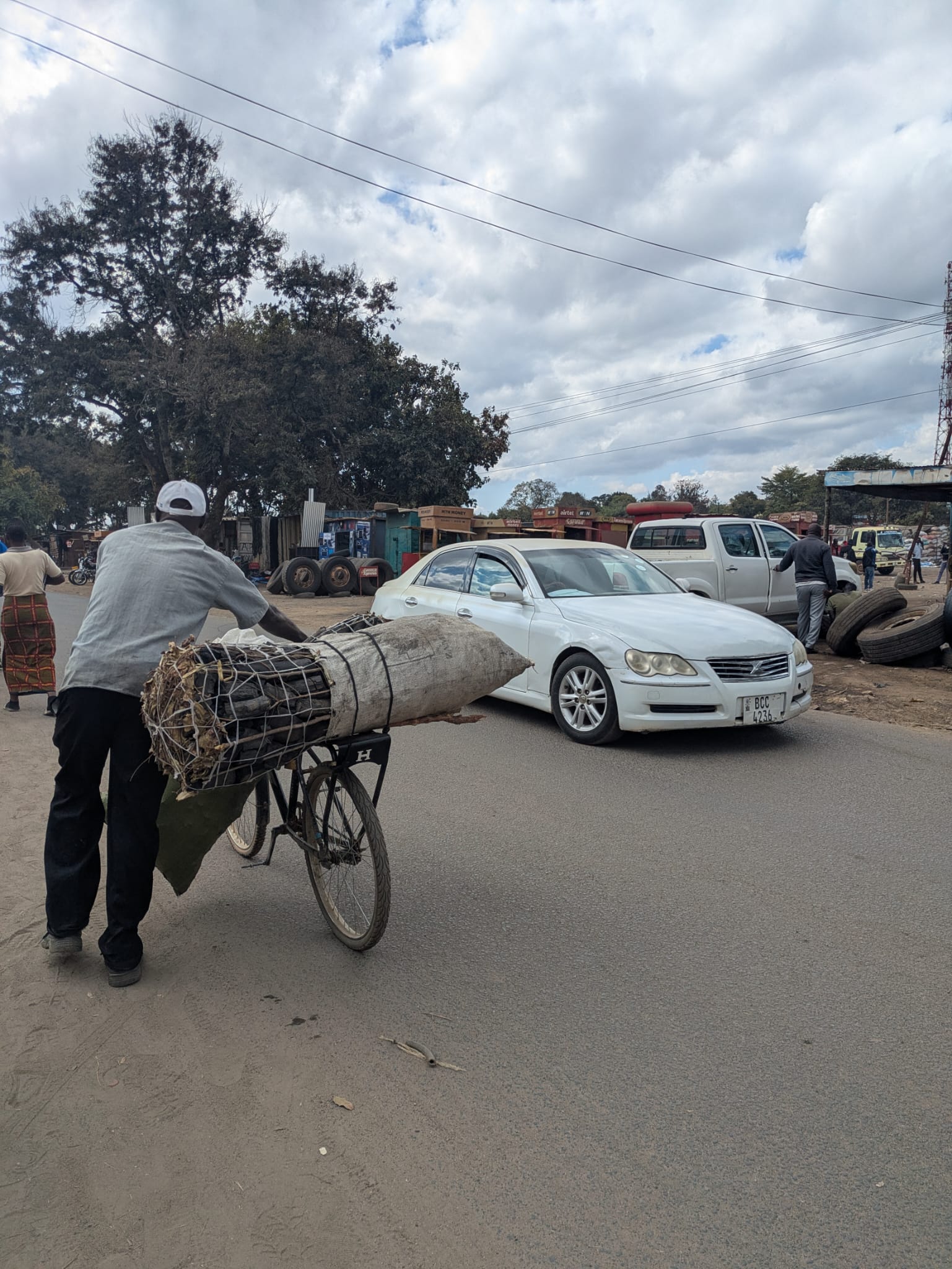
To me, Kabwe, infamously called “the most toxic town on Earth” seemed a happy place. Contrary to Kimberley, people did not caution me not to walk places and wherever I went, people seemed eager to chat. When I was trying to buy a pack of cigarettes, and there was some confusion in the communication, more than five people offered to help me, and a man from a distance exclaimed ‘muzungu, muzungu!’, referring to my identity as a white person, but mostly, as a stranger.
The second day, Walker took us around to visit the places that were important to his historical research. We soon figured out that Google maps was unreliable and that everything had been changing. Nevertheless, we made it to the dusty mine. While we did not have complete access, we could see the mining shaft towering from a distance. The mine had officially been closed down in 1994, but according to Human Rights Watch, the waste dumps still contaminate homes, gardens, schools and roads. A few men were walking around with wheelbarrows and I noticed a small toddler walking around by himself. While I did not find Kabwe the depressing place as it has been depicted, the soil is definitely polluted with lead. Thinking of my own little niece of two years old, I felt a pang in my heart at the thought of this little body being filled with toxic metals.
We resumed our visit to see the Mulungushi University, railway station and the centre of town featuring the biggest fig tree one can imagine (but really, the biggest!). A sign beneath it explained that it was used as a “meeting place of the towns during the early days of the settlement”, where donkeys could rest in its shade. These days, it may no longer serve as a resting place for travelers, but it remains a vibrant gathering spot where locals sell their produce and a wide array of other goods. I wish I had more time to ‘walk the land’ here, as there’s so much to uncover about how the landscape has evolved. Fortunately, my colleague Walker will have plenty of time to do just that in the coming year of 2026.
After leaving Walker in Zambia, JB and I continued on to Namibia. We first visited Windhoek, where we stayed for two nights. JB showed me some of the places from his childhood and pointed out how remarkably much of the city's architecture was designed and constructed by North Korea. [2] Indeed, the grandiose white buildings such as the Independence Memorial Museum and the State House, with enormous statues, are a sight you would rather expect in Pyongyang.
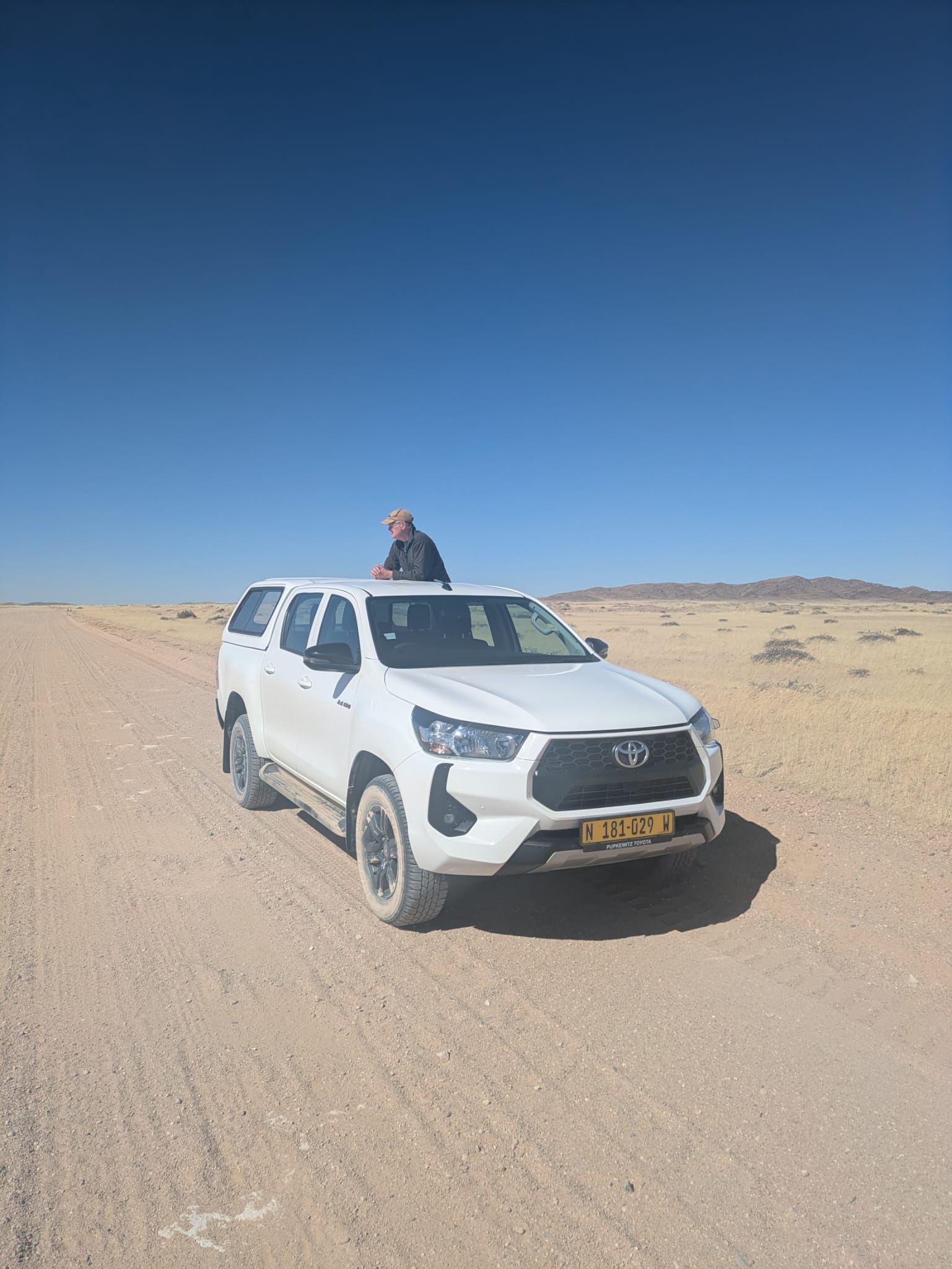
From there, we took the road to Swakopmund. Compared to previous years, the grass was unusually high and the landscape was relatively green. Namibia has seen an enormous amount of rain this year. Though I personally do not have any point of reference, a desert tour guide from Swakopmund, told me she got banned from a Facebook group after she posted a video of the Swakop river in full flood on the first of April. Knowing the Namibian patterns of rainfall, the moderators thought it must have been AI or some other type of joke.
If it had not already been clear that Namibia was once colonized by the Germans, it certainly would be in Swakop, where you still can get Kaffee und Kuchen at Café Anton and find Nazi paraphernalia for sale at Peter’s Antiques. Perhaps even more striking to the European mind is that Swakop seems to have undergone no decolonization at all. Near the lighthouse, you can find a statue commemorating the fallen German soldiers from the first and second World War. In the bookstores, you can find a rich collection of books with titles in Fraktur type font (‘the German Script’). Though the relationship between Fraktur and Nazism is a complicated one, the intention of these books were clear as they often explicitly denied the Herero genocide of 1904-1908 or attacked the so-called ‘Blue Book’ featuring personal narratives of people living under German occupation. Nevertheless, times are changing, and the local museum did recently open a room that finally did feature the violent history of colonization. Meanwhile, in the area around Swakopmund, large uranium mines offer employment while simultaneously degrading the landscape, demonstrating that extractivist industries continue to shape the region in powerful ways, albeit under the guise of national development rather than overt colonial control.
After Swakopmund, we visited Tsumeb, the site of my own research and the place where I will spend much of 2026. As I walked around, I did not feel the same optimism as I experienced in Kabwe. This atmosphere may have been partially due to the timing of our visit: the mine had recently been sold by the Canadian-owned Dundee Precious Metals to the Chinese-owned Sinomine, a transition that came with restructuring and retrenchments. In concrete terms, it came with the statement that 650 workers will be laid-off. I will quote a reaction under a Facebook-post of the Namibian Sun on the matters that summarizes the anxiety about the future of the town: “That mine is the heart and backbone of Tsumeb, I wonder what will happen to the town if they shut it down” under which someone reacts that it is a “ghost town in the making”.
While preparing my presentation for the workshop in Leiden back in March, I suggested that Tsumeb might diversify its economy to deal with its dependence on the smelter and tap into the tourism market. But after visiting the town, I wasn’t so sure anymore. The most commonly used route from Windhoek to Etosha passes through Outjo, meaning Tsumeb doesn’t lie on standard tourist itineraries. That’s not to say tourism is a panacea for economic challenges, as the Covid-19 pandemic demonstrated, the tourism market is inherently fickle, and its benefits are often unequally distributed. Still, Tsumeb possesses a heritage that is worth preserving, not only for local identity, but also for understanding the significance of mining in the 20th century. Namely, the Tsumeb Mineralogic & Mining Museum has an incredible display of the shaft, the machinery and the open pit that is open for visitors to see.
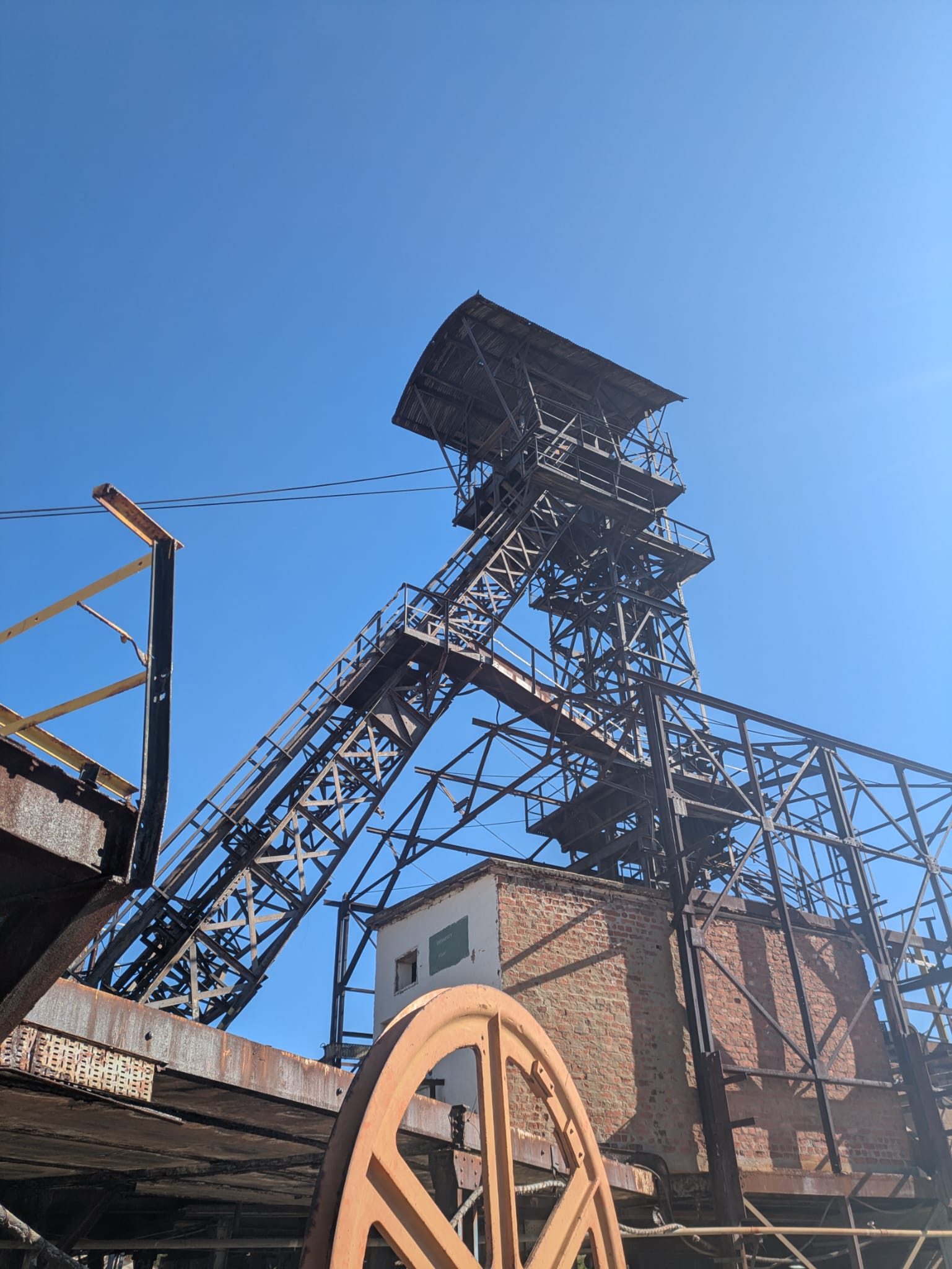
Nevertheless, it is well worth mentioning that any type of heritage preservation that holds any educational value definitely needs to do a better job at telling stories. Spending time with tourists, it struck me that people still see Namibia as a wild place outside of history with people outside of history. Echoing themes that have often been explored in anthropology, Western tourists are interested in doing cultural tours that provide them with a story as they expect it: bare-breasted women with elaborately braided hair and jewellery made out of colourful beads doing craftwork that are being infringed upon by the modern world. It is the tourist market, then, that sells them their own preconceptions as entertaining truths to tell back home. A point in case was my visit to the Tsumeb Museum together with JB, in which the first room featured pictures of bare-breasted black women and a man smugly exclaimed “ah, there they are, woman in their full glory!”. Thinking about how these women certainly did not consent to these pictures, and would definitely not consent to that old white man’s stupid comment, made me viscerally angry. Nevertheless, I do believe in good intentions, and I am convinced that if stories are told with more respect, people would be open to embracing them.
We would like to thank all the people who made this field trip possible, far too many to list in full. First and foremost, we are deeply grateful to Madi, Gert, and Marnu Botes, who hosted us with warmth and generosity in Kimberley. We are equally thankful to Trust Malawo, who drove us safely across long stretches in Zambia, to Jens Frautschy, who guided us through the mining museum in Tsumeb, and to Stanley and Vicky Kotze for assistance in Tsumeb.